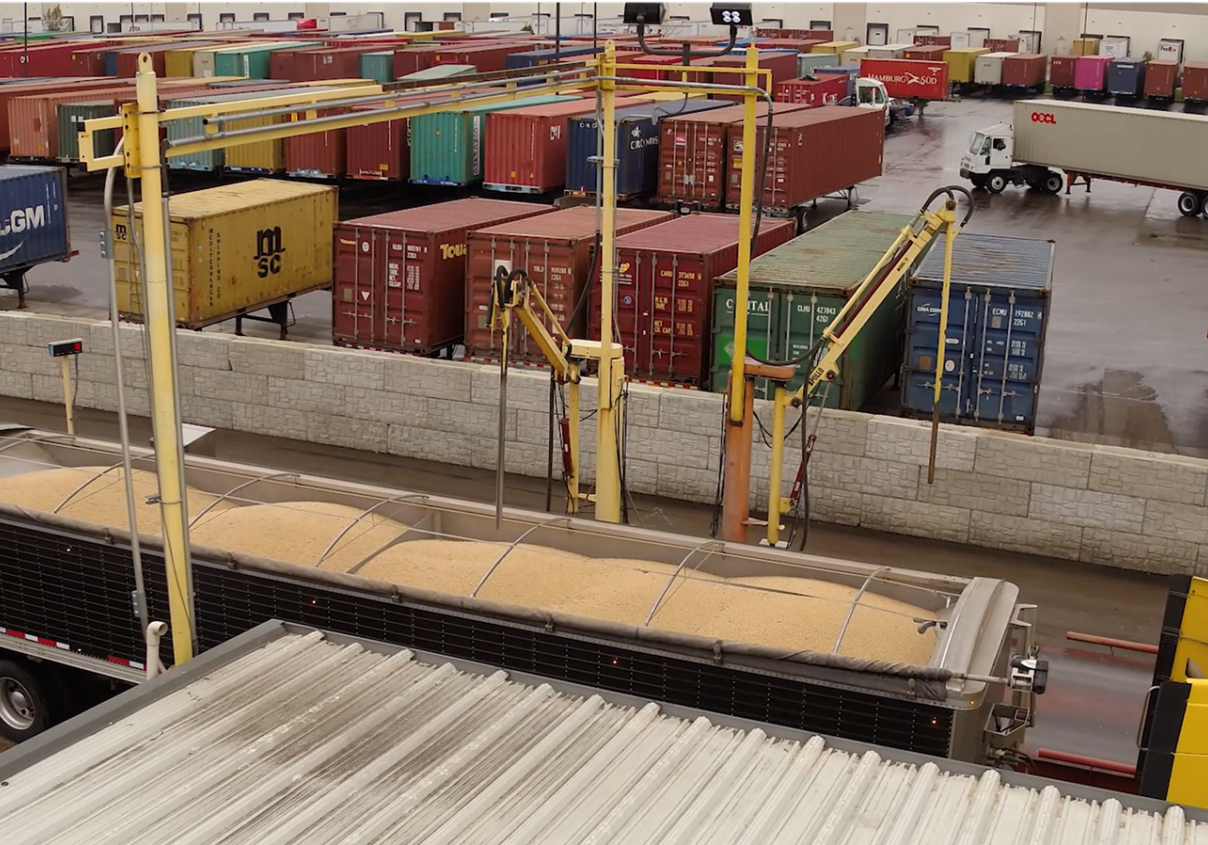VAA News | May 29, 2019
Engineering an Exceptional Pile
THREE CONSIDERATIONS FOR INSTALLING A GROUND PILE
Increasing crop yields per acre, inconclusive trade talks and low commodity prices slow the movement of corn and grain, leaving elevator owners to consider how best to add storage capacity while minimizing costs and protecting their product.
Installing a temporary storage system (commonly known as a ground pile) is faster and cheaper than building a steel or concrete bin, but several aspects need to be considered to ensure the best possible outcome.
STRUCTURE
Ground pile “structure” varies greatly, from ultra-temporary storage directly on the ground to piles sited on a gravel, asphalt or concrete surface. Some piles have no sidewalls, while others include 4′ to 8′ steel or concrete sidewalls that provide stability and allow grain to be piled higher.
Simply piling grain on the ground may seem like an easy storage solution, but it can end up costing elevator owners money. Soil is likely to mix with the bottom 18 – 24” of grain, resulting in product lost to contamination and rot.
Piles sited on gravel or aglime are better protected, but the bottom 12 – 18” are susceptible to moisture. A concrete surface, if properly constructed, provides the most durable and water-resistant option but it’s comparatively a larger investment. Though it may be cheaper intitially to not install pavement, the loss of product can often pay for these improvements.
Each plant’s storage needs are different and an effective ground pile design will account for a variety of factors, such as an owner’s budget, the amount of grain to be stored and the length of storage time.
SITE SELECTION
Ground piles require a substantial amount of suitable land. Space for drainage, ditching and culverts needs to be factored in to site selection, as well as constraints such as proximity to a county highway right-of-way and / or compliance with local stormwater regulations.
For example, a pile of 1 million – 1.5 million bushels takes up roughly 1.5 – 2 acres (depending on sidewall height); factor in space for the walls, ditching and roadways and the actual footprint of the site is about 4.3 acres.
The topography of the site is also critical, and it’s possible that much earthwork will need to be performed to ensure proper drainage.
The process isn’t overly complicated, but there are some intricacies and factors to be aware of to make a good design. Developing a site grading plan can help minimize drainage issues and make sure the pile can be filled and reclaimed in an efficient manner.
Owners also need to determine how the additional storage impacts other features of the plant, such as relative locations of truck roadways and scales. Understanding how a ground pile fits within the site’s workflow and existing infrastructure ensures the plant continues to operate smoothly.
RETURN ON INVESTMENT
While year-to-year conditions such as yields, prices and availability of storage space drive the decision to add ground piles, the big question is what the return on investment will be and whether an owner will be able to recoup their costs.
The biggest benefit of ground piles is they provide a less expensive grain storage option than bins because they typically have no real structure. However, the site location, plant layout and how the pile will be filled and reclaimed all impact the project’s return on investment, which is often the ultimate factor in determining whether to add a ground pile.
While elevator owners generally have a good idea of how much grain they want to store and how to go about it efficiently, partnering with an experienced engineer can help owners obtain a cost-effective design tailored to their needs.
A knowledgeable engineer will ask specific questions and offer schematic design as well as big picture planning.
Taking in to account the site’s typography, plant infrastructure and workflow and owners’ business objectives is essential to creating the most successful storage solution to guard against the loss of product, time and revenue.
About the Author
Landon Pohl, PE
Landon is an Associate / Sr. Civil Engineer with 11 years of experience in designing grading plans, stormwater / site layouts and grain storage and loading facilities for industrial and agribusiness projects. A civil engineering point of contact for one of the Midwest’s well-known Fortune 500 companies specializing in agribusiness, his skill for managing his time and project details is clear in his work, from straight forward site planning and utility coordination to multidiscipline agribusiness and industrial efforts.
Share with a Friend
Let's connect.
Whether you need a new or expanded facility, a process designed or debottlenecked, life safety or structural analysis… VAA can help you grow.



![[TEMPLATE] Top Workplaces Awards (1) [TEMPLATE] Top Workplaces Awards (1)](https://vaaeng.com/wp-content/uploads/bb-plugin/cache/TEMPLATE-Top-Workplaces-Awards-1-landscape-4178622959a03a1338068bf56f8f5d6e-.png)


